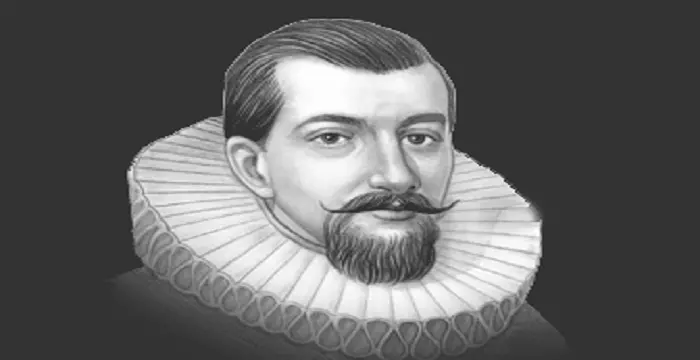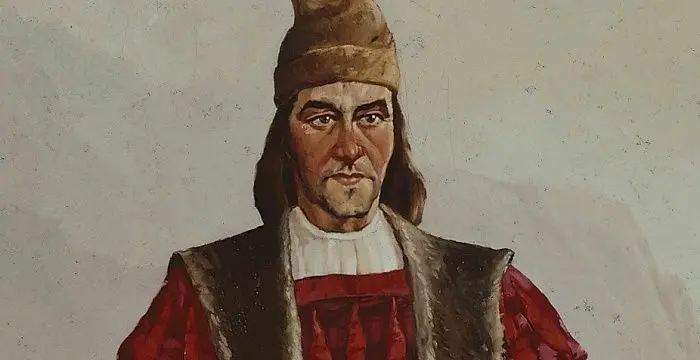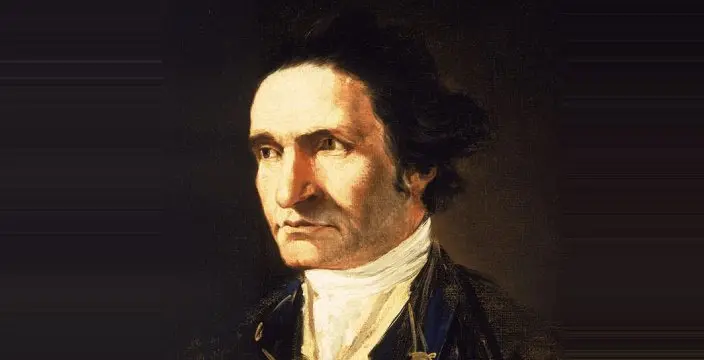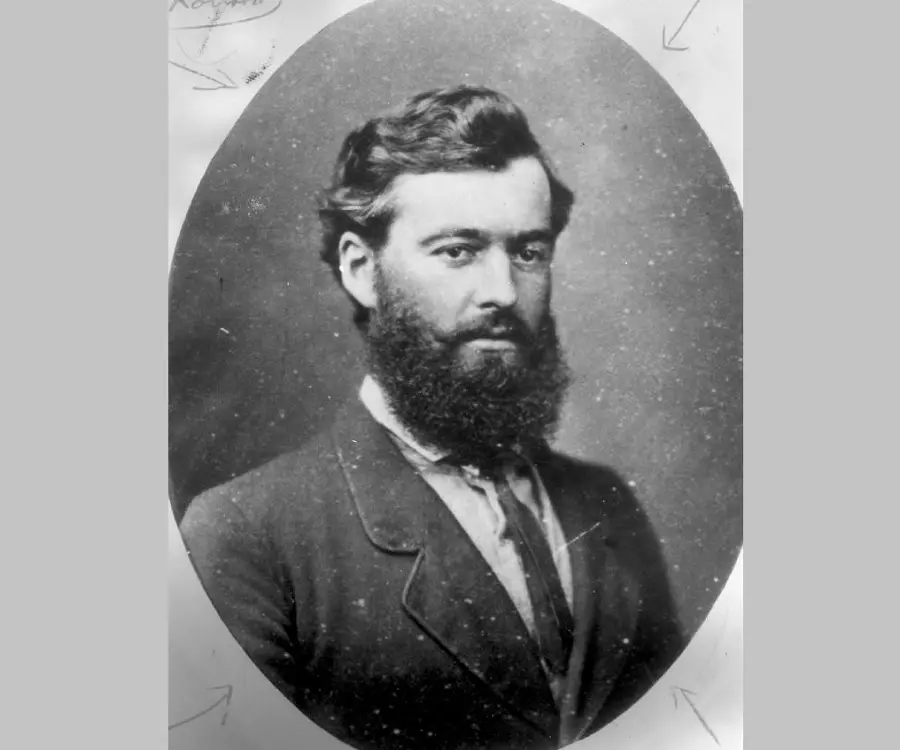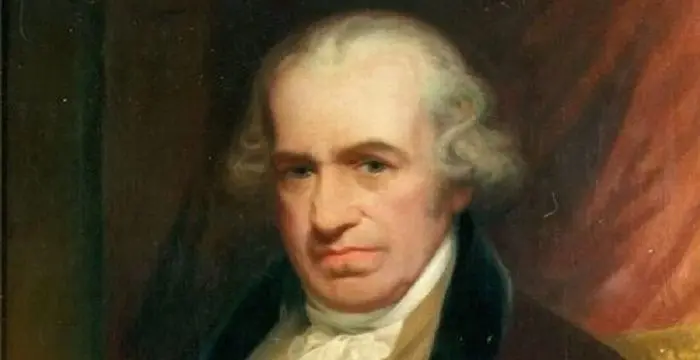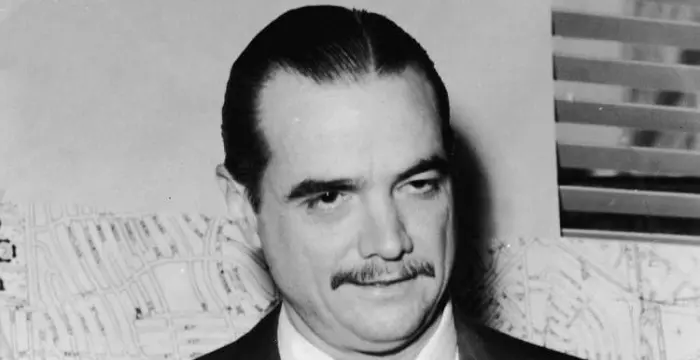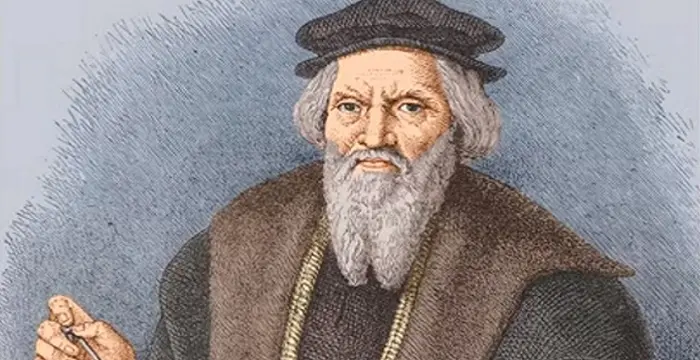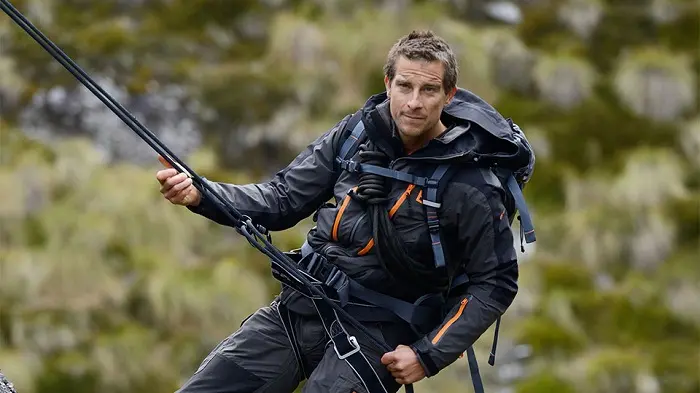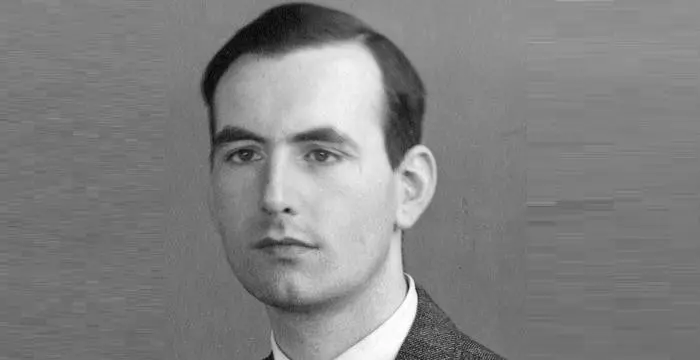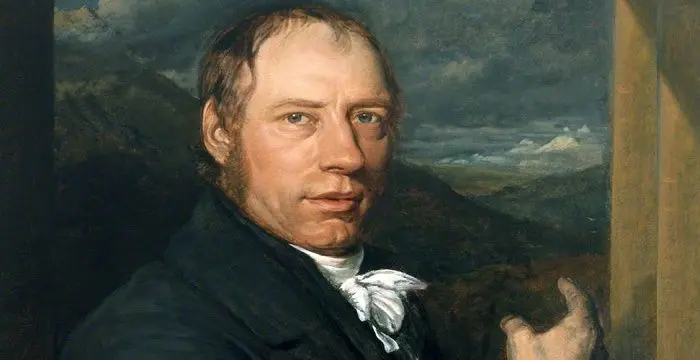
Lawrence Hargrave - Explorers, Birthday and Childhood
Lawrence Hargrave's Personal Details
Lawrence Hargrave was an Australian engineer, aviation pioneer, inventor, explorer, and astronomer
| Information | Detail |
|---|---|
| Birthday | January 29, 1850 |
| Died on | July 14, 1915 |
| Nationality | Australian |
| Famous | Engineers, Inventors & Discoverers, Explorers, Explorers, Inventors |
| Birth Place | Greenwich |
| Gender | Male |
| Sun Sign | Aquarius |
| Born in | Greenwich |
| Famous as | Inventor & Explorer |
| Died at Age | 65 |
// Famous Explorers
Henry Hudson
Henry Hudson was an early 17th century English navigator and explorer. This biography of Henry Hudson provides detailed information about his childhood, life, achievements, works & timeline
Bartolomeu Dias
Bartolomeu Dias was a Portuguese explorer who became the first European to reach Indian Ocean from the Atlantic. This biography of Bartolomeu Dias provides detailed information about his childhood, life, achievements, works & timeline.
James Cook
James Cook was a British explorer, captain and cartographer. Explore this biography to learn more about his profile, childhood, life and timeline.
Lawrence Hargrave's photo
Who is Lawrence Hargrave?
Lawrence Hargrave was an Australian engineer, aviation pioneer, inventor, explorer, and astronomer. He was born and educated in England and immigrated to Australia at the age of 15. Very early in life, he became an explorer and undertook voyages to New Guinea in the 1870s. He later joined as an assistant astronomical observer at the Sydney Observatory. After inheriting his late father’s wealth in the mid 1880s, he gave up employment to focus on researching the difficulties of human flight. For this purpose, he observed and studied the flight of birds and insects. He developed several plane models in the late nineteenth century, and applied to them the principle of his inventions like the rotary engine and box kite. These discoveries formed the foundation of early aviation. As an inventor, he was extremely optimistic and constantly persevered towards his goals. He was also a humble and generous person as he never bothered to patent his various inventions. His only purpose was to contribute to the advancement of human knowledge. As with most pioneers, he was not sufficiently honoured during his lifetime but came to be regarded highly when his contribution to aviation history became evident.
// Famous Inventors
Thomas Newcomen
Thomas Newcomen was a British inventor who developed the world’s first steam engine. Browse through this biography to learn in details about his life, career, works and timeline.
Erno Rubik
The famous inventor and educationist, Erno Rubik is known world-wide for his invention the ‘Rubik’s Cube’. To know more about the childhood, profile, timeline and career of this famous architect-inventor read on.
Howard Hughes
Howard Hughes was an American aviator, business tycoon, philanthropist and also a film maker. This biography explores his childhood, career, achievements and timeline.
Childhood & Early Life
Lawrence Hargrave was born on January 29, 1850, in Greenwich, England. He was born to John Fletcher Hargrave, later Attorney-General of NSW and Ann, née Hargrave.
In 1856, his father left his wife and three younger children to meet his brother Richard in New South Wales. He took along his eldest son Ralph and a brother called Edward.
Later, his mother shifted to Kent with the children. Hargrave received his early education at Queen Elizabeth's Grammar School, Kirkby Lonsdale, Westmorland.
After a few years, his father sent for him. The family then immigrated to Sydney, Australia on 5 November, 1865 on the ‘La Hogue’. With his father’s consent, he soon undertook a trip on the ‘Ellesmere’ to the Gulf of Carpentaria and circumnavigated Australia.
Meanwhile, he failed his matriculation examination and took an engineering apprenticeship with the Australasian Steam Navigation Company, Sydney, in 1867. He worked there for five years, learning skills which he later found to be invaluable in developing his models.
Career
In 1872, as an engineer he set out on a voyage to New Guinea on the ‘Maria’, but the ship struck Bramble reef and was destroyed. In 1875, he again sailed as an engineer on William John Macleay's expedition to the Gulf of Papua.
From October 1875 to January 1876, Lawrence Hargrave explored the vicinity of Port Moresby under Octavius Stone. Four months later, he went on another voyage, on the ‘SS Ellengowan’ under Luigi D'Albertis.
In 1877, he travelled around the pearling industry for Parbury Lamb and Co. When he returned to Sydney, he joined the Royal Society of New South Wales.
In 1878, he joined Sydney Observatory as an assistant astronomical observer. He continued in this job for the next five years, and retired in 1883 with a fair amount of practical knowledge.
Since childhood, he was interested in all kinds of experiments, especially those with aircraft. After inheriting his late father’s wealth in 1885, he resigned from paid employment and focussed on full-time research about difficulties connected with human flight. He studied the flight of birds for some time and conducted his flying machine experiments in Stanwell Park.
During his lifetime, he conducted many experiments and invented several machines. However, he never applied for any patent as he sincerely believed in sharing scientific advancements. His conclusions, which were published in a series of papers to the Royal Society of New South Wales, are a testimony to his success in his experiments with flying-machine motors and cellular kites.
In 1889, he invented a rotary engine which failed to attract the required attention. Although the engine was effective, the weight and quality of materials available then made it difficult to build an independent flying machine. The engine was later developed again by the Seguin brothers in 1908 and its principle was extensively used in early aviation.
On 12 November 1894, he fruitfully lifted himself off the ground at Stanwell Park Beach with the aid of his box kites. He rose 16 feet in a wind speed of 21 mph. He also carried an anemometer and clinometer to measure the wind speed and the angle of the kite line.
The experiment with the box kite established it as a steady aerial platform and helped those working toward powered flight. Eventually, the box-kite came to be used extensively for meteorological observations.
Soon, the theory of the box kite was applied to gliders. In October 1906, Alberto Santos-Dumont applied it in his aeroplane to make his first flight. The box-kite became the common kind of aeroplane in Europe till 1909.
He also experimented with a hydroplane, the application of the gyroscopic principle to a ‘one-wheeled car’, and with 'wave propelled vessels'. Although the likes of Alexander Graham Bell were motivated by his work, he was not suitably recognised during his lifetime and his plane models were gifted to the state of New South Wales.
Major Works
At Sydney Observatory, Hargrave worked with H. C. Russell. During this period, he observed the transit of Mercury, studied the Krakatoa explosion, supported Russell to calculate double stars, and developed machines to assist their calculations.
Hargrave had many inventions to his credit. The three most important ones are: firstly, the study of curved aerofoils, secondly, the box kite (1893), which significantly advanced the lift to drag ratio of early gliders and thirdly, the rotary engine, which powered the aircrafts of early twentieth century.
Awards & Achievements
Professor Richard Threlfall, in his presidential address to the Royal Society of New South Wales in 1895, mentioned Lawrence Hargrave as the “inventor of human flight”.
In 1947, the Lower Coast Road in New South Wales, Australia was renamed after him. Thereafter, the popular tourist drive has been known as the Lawrence Hargrave Drive and connects Wollongong and Sydney.
From 1966 to 1994, the back side of the Australian $20 banknote featured a picture of Hargrave along with his gliders.
The largest airline of Australia, Qantas has named its fifth Airbus A380 after him.
Personal Life & Legacy
Lawrence Hargrave married Margaret Preston, daughter of a Sydney shipping clerk, David Johnston on 7 September 1878. The couple had six children together, one of whom died in childhood.
During World War I, in May 1915, he lost his only son Geoffrey at the Battle of Gallipoli.
After undergoing a surgery for appendicitis, he suffered from peritonitis and died on July 6, 1915. He was buried in Waverley Cemetery.
He left an estate valued over £20,000 for his wife and four daughters. Mrs Hargrave finally settled in England.
// Famous Explorers
John Cabot
John Cabot was an Italian navigator and explorer who was the first European to discover the coast of North America. Check out this biography to know about his childhood, life, and achievements.
Marco Polo
Marco Polo was the legendary Italian merchant, explorer and traveler, who travelled to China and worked under emperor, Kublai Khan. Read this biography to learn more about his profile, childhood, life and timeline.
Bear Grylls
Bear Grylls is an adventurer popularly known for his bizarre survival tactics in reality television series Man vs. Wild. This biography provides detailed information about his childhood, profile, career and timeline.
Lawrence Hargrave biography timelines
- // 29th Jan 1850Lawrence Hargrave was born on January 29, 1850, in Greenwich, England. He was born to John Fletcher Hargrave, later Attorney-General of NSW and Ann, née Hargrave.
- // 1856In 1856, his father left his wife and three younger children to meet his brother Richard in New South Wales. He took along his eldest son Ralph and a brother called Edward.
- // 5th Nov 1865After a few years, his father sent for him. The family then immigrated to Sydney, Australia on 5 November, 1865 on the ‘La Hogue’. With his father’s consent, he soon undertook a trip on the ‘Ellesmere’ to the Gulf of Carpentaria and circumnavigated Australia.
- // 1867Meanwhile, he failed his matriculation examination and took an engineering apprenticeship with the Australasian Steam Navigation Company, Sydney, in 1867. He worked there for five years, learning skills which he later found to be invaluable in developing his models.
- // 1872 To 1875In 1872, as an engineer he set out on a voyage to New Guinea on the ‘Maria’, but the ship struck Bramble reef and was destroyed. In 1875, he again sailed as an engineer on William John Macleay's expedition to the Gulf of Papua.
- // Oct 1875 To Jan 1876From October 1875 to January 1876, Lawrence Hargrave explored the vicinity of Port Moresby under Octavius Stone. Four months later, he went on another voyage, on the ‘SS Ellengowan’ under Luigi D'Albertis.
- // 1877In 1877, he travelled around the pearling industry for Parbury Lamb and Co. When he returned to Sydney, he joined the Royal Society of New South Wales.
- // 1878 To 1883In 1878, he joined Sydney Observatory as an assistant astronomical observer. He continued in this job for the next five years, and retired in 1883 with a fair amount of practical knowledge.
- // 7th Sep 1878Lawrence Hargrave married Margaret Preston, daughter of a Sydney shipping clerk, David Johnston on 7 September 1878. The couple had six children together, one of whom died in childhood.
- // 1885Since childhood, he was interested in all kinds of experiments, especially those with aircraft. After inheriting his late father’s wealth in 1885, he resigned from paid employment and focussed on full-time research about difficulties connected with human flight. He studied the flight of birds for some time and conducted his flying machine experiments in Stanwell Park.
- // 1889 To 1908In 1889, he invented a rotary engine which failed to attract the required attention. Although the engine was effective, the weight and quality of materials available then made it difficult to build an independent flying machine. The engine was later developed again by the Seguin brothers in 1908 and its principle was extensively used in early aviation.
- // 1893Hargrave had many inventions to his credit. The three most important ones are: firstly, the study of curved aerofoils, secondly, the box kite (1893), which significantly advanced the lift to drag ratio of early gliders and thirdly, the rotary engine, which powered the aircrafts of early twentieth century.
- // 12th Nov 1894On 12 November 1894, he fruitfully lifted himself off the ground at Stanwell Park Beach with the aid of his box kites. He rose 16 feet in a wind speed of 21 mph. He also carried an anemometer and clinometer to measure the wind speed and the angle of the kite line.
- // 1895Professor Richard Threlfall, in his presidential address to the Royal Society of New South Wales in 1895, mentioned Lawrence Hargrave as the “inventor of human flight”.
- // Oct 1906 To 1909Soon, the theory of the box kite was applied to gliders. In October 1906, Alberto Santos-Dumont applied it in his aeroplane to make his first flight. The box-kite became the common kind of aeroplane in Europe till 1909.
- // May 1915During World War I, in May 1915, he lost his only son Geoffrey at the Battle of Gallipoli.
- // 6th Jul 1915After undergoing a surgery for appendicitis, he suffered from peritonitis and died on July 6, 1915. He was buried in Waverley Cemetery.
- // 1947In 1947, the Lower Coast Road in New South Wales, Australia was renamed after him. Thereafter, the popular tourist drive has been known as the Lawrence Hargrave Drive and connects Wollongong and Sydney.
- // 1966 To 1994From 1966 to 1994, the back side of the Australian $20 banknote featured a picture of Hargrave along with his gliders.
// Famous Inventors & Discoverers
Nikola Tesla
Nikola Tesla was a Serbian-American inventor, best known for his development of alternating current electrical systems. This biography of Nikola Tesla provides detailed information about his childhood, life, achievements, works & timeline.
Thomas Newcomen
Thomas Newcomen was a British inventor who developed the world’s first steam engine. Browse through this biography to learn in details about his life, career, works and timeline.
Erno Rubik
The famous inventor and educationist, Erno Rubik is known world-wide for his invention the ‘Rubik’s Cube’. To know more about the childhood, profile, timeline and career of this famous architect-inventor read on.
Ernst Ruska
Ernst Ruska was a German physicist who invented the electron microscope. Check out this biography to know about his childhood, life, achievements, works & timeline.
Howard Hughes
Howard Hughes was an American aviator, business tycoon, philanthropist and also a film maker. This biography explores his childhood, career, achievements and timeline.
Richard Trevithick
Richard Trevithick was a British inventor who was the pioneer of steam-powered road and rail transport. Check out this biography to know about his childhood, family life, achievements and fun facts about him.
Lawrence Hargrave's FAQ
What is Lawrence Hargrave birthday?
Lawrence Hargrave was born at 1850-01-29
When was Lawrence Hargrave died?
Lawrence Hargrave was died at 1915-07-14
Which age was Lawrence Hargrave died?
Lawrence Hargrave was died at age 65
Where is Lawrence Hargrave's birth place?
Lawrence Hargrave was born in Greenwich
What is Lawrence Hargrave nationalities?
Lawrence Hargrave's nationalities is Australian
What is Lawrence Hargrave's sun sign?
Lawrence Hargrave is Aquarius
How famous is Lawrence Hargrave?
Lawrence Hargrave is famouse as Inventor & Explorer
